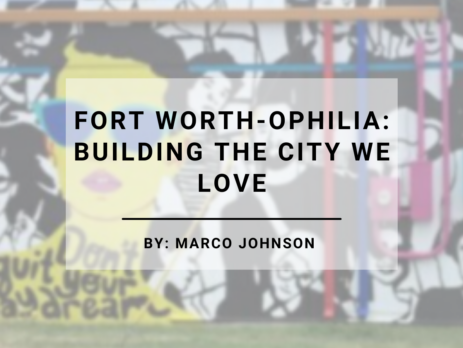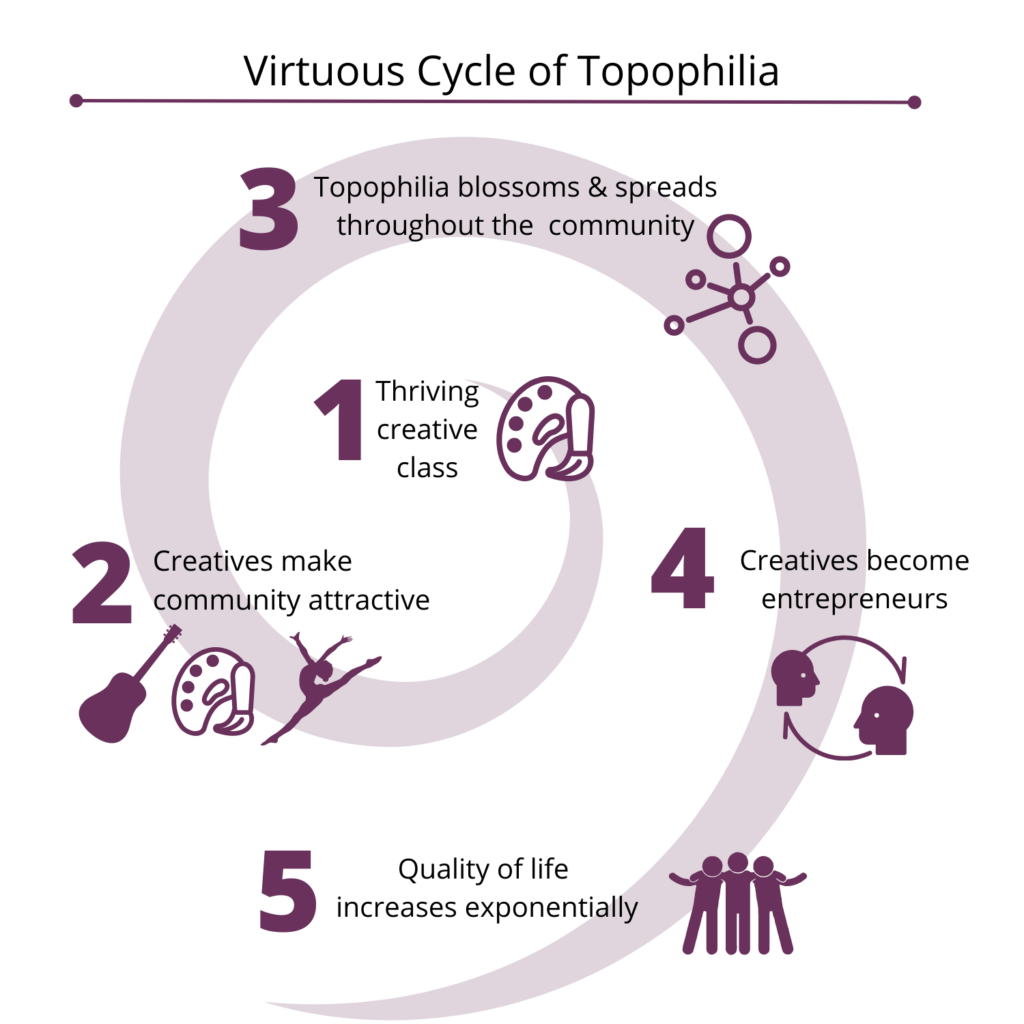Everybody wants to live in a city that offers basic city services and meets the needs of its citizens. Most major cities in the US fit this description but what separates vibrant cities known for fostering innovation, trendy and aspiring creative districts, and high growth startups from cities that are coasting on 20th century ideas? The answer – according to numerous studies on this topic – is topophilia, which means love of place.
Fostering Topophila
So what makes someone love their city or town? It goes far beyond meeting the basic needs of residents. What really generates love of place is access to affordable housing, access to transit, and high-quality schools as well as cultural, social and natural benefits. The key ingredient that fosters topophila is a thriving “creative class” which includes entrepreneurs, artists, and diverse array of unique thinkers and doers that give a community a distinctive flavor. This is important because academic studies (see here and here) show a positive correlation between entrepreneurship and a creative economy.
Think of what we have in Fort Worth that distinguishes our city from others – a world class cultural district, nationally recognized art shows, an incredible foodie economy, and a deep tradition of different kinds of music, to name a few. Most neighborhoods have spots that locals cherish, like local eateries or parks. Some neighborhoods, like Fairmount and the Northside, have built their entire identity around the concept of topophilia.
Topophilia and Entrepreneurship
Research shows a high correlation between a strong creative class and innovators. Living in a vibrant city with lots of fun amenities goes beyond filling up people’s lives with easy access to fun and culture. Founders of high-growth companies usually live in their city years before they launch a company. Another way to put it: today’s creative class are tomorrow’s high growth entrepreneurs. Here’s the cycle:
- A community with a nascent creative class attracts other creative types
- Those creatives support each other and begin a movement centered on the improvement of their community
- The more they invest in their community, the better it becomes and people inside and outside the creative class develop a deeper love of place that drives them to solve problems
- Many of these initiatives turn into projects, companies or nonprofits that address problems in an innovative way. This is where creatives blossom into entrepreneurs.
- Improvements from creative entrepreneurs filter into all aspects of the community and it becomes a better place to live, drawing in even more creatives and non-creatives alike.
The virtuous cycle described above is arguably the most sustainable and interesting way to build an inclusive community from a grassroots movement. Throughout the cycle companies are launched that not only address local issues but also create jobs and generate wealth that stays in the community. Brad Feld and Ian Hathaway described it elegantly in their book The Startup Community Way:
Entrepreneurs want to build lasting things. This desire extends beyond their companies and is an amplifying motivating factor. As it turns out, they also want to do it in the places they love and where they and their families spend the most time.
Check out our companion post on steps we can take to make sure our creative class can thrive right here in Fort Worth as we work to build the country’s next entrepreneurial hot spot.




